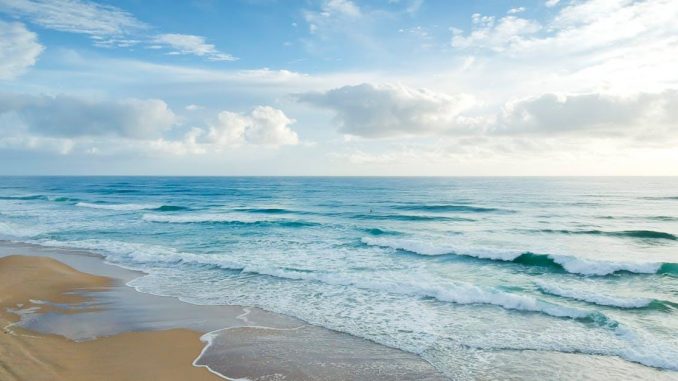
Denmark, with its vast coastlines, boasts some of the most stunning and diverse beaches in Northern Europe. From the rugged cliffs of the west coast to the gentle, sandy shores of the eastern islands, Danish beaches offer something for everyone. Whether you’re looking for tranquility, adventure, or simply a place to unwind, Denmark’s beaches provide the perfect backdrop. In this article, we’ll explore some of Denmark’s most popular and hidden beach destinations, their unique characteristics, and why they should be on every beach lover’s travel list.
The Majestic West Coast of Jutland
Denmark’s west coast, particularly along the Jutland Peninsula, is a paradise for those who love vast stretches of sand and dramatic landscapes. The North Sea’s powerful waves crash against the shore, creating an exhilarating atmosphere for surfers, kiteboarders, and nature lovers alike. One of the most famous beaches here is Hvide Sande, a quiet village with endless sandy shores perfect for long walks. The dunes here are high and provide stunning views of the sea, offering a sense of solitude and connection to nature.
Another highlight is Råbjerg Mile, Denmark’s largest moving sand dune. This natural phenomenon offers a unique experience, as the shifting sands create ever-changing landscapes. Visitors can climb the dunes and enjoy breathtaking views of the North Sea and the surrounding countryside.
The Tranquil Shores of the Island of Zealand
Zealand, Denmark’s largest island, is home to some of the country’s most peaceful and accessible beaches. The island offers a diverse range of beach experiences, from charming coastal towns to serene, hidden coves. Amager Strandparknear Copenhagen is a particularly popular spot, offering a blend of urban convenience and beach relaxation. This long stretch of sandy beach is perfect for a day of sunbathing, swimming, or enjoying the vibrant local culture.
For a more secluded experience, head to Sagnlandet Lejre, where nature and history meet. The small, picturesque beach here is nestled among lush greenery and offers calm waters ideal for swimming. The area is also rich in archaeological sites, making it a fascinating destination for both beachgoers and history buffs.
Bornholm: Denmark’s Eastern Gem
The island of Bornholm, located in the Baltic Sea, is often called Denmark’s “sunshine island,” known for its relatively mild climate and dramatic coastal landscapes. The island’s beaches stand out due to their crystal-clear waters, often compared to those of the Mediterranean. Dueodde Beach, located on the southern tip of Bornholm, is a standout, with its fine, powdery white sand and shallow waters, perfect for families with children.
The beaches of Bornholm also offer a mix of secluded coves and more popular, easily accessible shores. For those who enjoy both beach and adventure, Hammerhavnen offers a rugged coastline with cliffs and caves, ideal for exploring and taking in the stunning scenery.
The Natural Beauty of Skagen and the Point of Denmark
Skagen, located at the northern tip of Jutland, is where the North Sea and the Baltic Sea meet. This unique geographical location creates a strikingly beautiful environment where the shifting tides and winds shape the coastline. The beaches here, such as Grenen, are known for their expansive dunes, scenic views, and the fascinating phenomenon where two seas collide. Visitors can take a ride on a tractor to the tip of Grenen to stand at the meeting point of these two mighty waters.
The area surrounding Skagen is also famous for its picturesque fishing villages and vibrant cultural scene. Skagen’s clear skies and soft light have attracted artists for centuries, adding an artistic flair to this coastal paradise.
The Lesser-Known Beauty of Langeland
While many travelers flock to Denmark’s more well-known beach destinations, the island of Langeland, located between Funen and Zealand, remains a hidden gem. Langeland’s beaches are ideal for those seeking quiet and unspoiled nature. The coastline is dotted with small, cozy beaches such as Strynø, which is perfect for sailing and exploring local wildlife.
Langeland also offers a variety of landscapes, from sandy shores to rocky cliffs, making it a great destination for nature walks and birdwatching. The calm and serene waters are perfect for swimming and kayaking, while the island’s charming villages offer a peaceful retreat away from the hustle and bustle.
Whether you’re an avid surfer, a family looking for a relaxing holiday, or a nature enthusiast seeking quiet solitude, Denmark’s beaches provide a diverse array of options. From the windswept shores of the west coast to the tranquil coves of Zealand and the crystal-clear waters of Bornholm, there is a beach for everyone. Denmark’s beaches are more than just beautiful; they are places where nature, history, and culture come together, creating unforgettable experiences. With so many options to choose from, the only question left is: which beach will you explore next? For more useful guides on Denmark, The Danish Dream is the place to go.

Leave a Reply